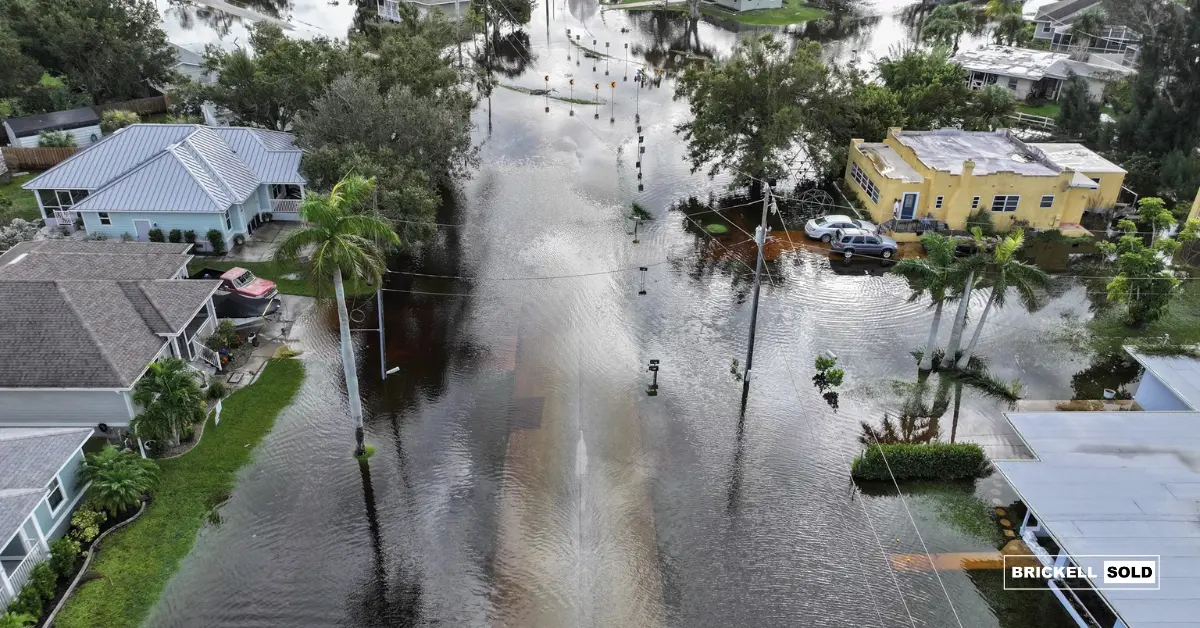Introduction: The Toll of Recent Hurricanes
Florida hurricanes impact – The last few years have been challenging for Florida, with hurricanes growing both in frequency and intensity. Recently, Hurricanes Helene and Milton swept through Florida’s Gulf Coast, devastating communities, destroying property, and leaving many to wonder if Florida is still a desirable place to live. Among those grappling with this decision is Treasure Island’s Mayor Tyler Payne, who announced he would move away after his home suffered irreparable flood damage. Payne’s situation resonates with countless Floridians facing difficult choices in the wake of disaster. However, history suggests that despite the risks, Floridians have consistently shown resilience.
Florida hurricanes impact
Population Growth Despite Risks
Since the early 2000s, Florida’s population has continued to increase, often at rates outpacing other states. Between 2004 and 2024 alone, the state added millions of residents, with population growth largely undeterred by severe hurricane seasons like those in 2004 and 2017. Florida’s appeal, centered on warm weather, beautiful beaches, and favorable tax policies, has made it a top destination for retirees, families, and investors alike.
Despite catastrophic storms such as Charley, Frances, Jeanne, and Ivan, Florida’s allure as a place to live, work, and retire remains strong. Over time, residents have grown to view hurricanes as a manageable risk rather than a dealbreaker. Many new residents may weigh the appeal of Florida’s lifestyle, job market, and retirement benefits against the potential for natural disasters, ultimately finding the positives to outweigh the negatives.
Psychology of Risk
Understanding why people continue to move to Florida despite natural disaster risks requires examining the psychology behind risk tolerance. Risk perception varies widely among individuals. For some, the threat of hurricanes may seem distant or manageable, particularly given modern technology, stronger building codes, and emergency response systems. Others may consider the benefits of Florida living — warmer winters, tax savings, and access to the coast — too valuable to pass up, even if it means facing the occasional hurricane season.
In addition, for many residents and prospective buyers, hurricanes are seen as seasonal hazards rather than year-round threats. This outlook likely contributes to Florida’s continued appeal, even in the face of severe weather.
Economic Impact on the Real Estate Market
Immediate Market Reaction
In the short term, the impact of hurricanes can be felt directly in Florida’s real estate market. After a major storm, housing markets often experience a slowdown as property owners assess damages, work with insurance companies, and start rebuilding. This can lead to a temporary dip in listings and sales, as seen in the aftermath of recent hurricanes. In September, single-family home sales dropped by 12% year-over-year, but this trend was likely influenced by various factors, including rising interest rates and increased home prices.
Long-Term Price Trends
In the longer term, however, hurricanes often have an unexpected effect: they drive up housing prices in affected areas. Studies examining hurricane impact on Florida’s housing market from 2000 to 2016 found that, three years post-storm, housing prices were 5% higher on average than in other parts of the state. This phenomenon is largely due to supply constraints. Hurricanes can reduce the availability of homes, as some owners take time to rebuild, or they may choose to leave the area altogether. Consequently, a reduced supply can lead to an increase in demand and a corresponding rise in property values.
Insurance and Financial Barriers
One of the greatest financial challenges that Floridians face post-hurricane is the cost of insurance. Rising premiums and increasing difficulty in obtaining insurance are becoming significant obstacles for many homeowners. While insurance might offer short-term financial relief after a hurricane, the overall rise in insurance rates for high-risk areas could price out less affluent residents. For wealthier residents, however, these challenges may be less daunting, which may lead to a shift toward more affluent buyers in certain coastal areas.
The complexity of insurance claims and the potential need for policy updates to accommodate increased hurricane risks adds to the financial stress for homeowners, making insurance a key factor in the decision to stay or move.
Demographic Shifts Post-Disaster
Migration Patterns
After major hurricanes, migration patterns often reflect a temporary exodus, with some residents choosing to relocate to safer inland areas. However, historical data suggests that these moves are usually short-lived. Many residents eventually return to their communities once they are rebuilt, while others may simply shift from barrier islands or coastal areas to slightly inland locations. For example, after Hurricane Ian, Fort Myers experienced population shifts but continued to see residents and recovery workers moving in.
Labor Dynamics and Demographic Changes
Disasters like hurricanes can also lead to changes in the workforce and demographic composition of impacted areas. For instance, in the aftermath of Hurricane Ian, Fort Myers saw an influx of younger, working-age individuals in fields such as construction, utility management, and transportation. Recovery efforts often require a temporary surge in labor, drawing in workers who may later choose to settle in the area.
In terms of demographic composition, many hurricane-impacted communities experience shifts, with an increase in younger adults and a diversification of racial and ethnic backgrounds as recovery workers and laborers move in.
Preconstruction Miami offers in-depth information on real estate developments across the U.S. It highlights upcoming projects, investment opportunities, and valuable insights into the pre-construction market. For those looking to stay ahead of trends and explore the best new opportunities, this platform is a comprehensive resource for prospective buyers and investors.
Rebuilding with Resilience
Impact of Building Codes
Florida’s approach to resilience has been shaped significantly by its building codes, particularly those enacted after Hurricane Andrew in 1992. These codes have made new construction much more resistant to hurricane damage. As a result, homes built to these newer standards generally sustain less damage during storms, which may reduce the likelihood of owners moving away due to property destruction.
Adaptation Strategies
Beyond building codes, Florida has adopted various adaptive strategies to reduce hurricane damage. Cities and developers have begun investing in flood-resistant infrastructure, such as elevated foundations and reinforced buildings, and urban planning initiatives designed to withstand severe weather. These adaptations not only help to protect property but also increase confidence among residents and prospective homebuyers.
As climate change increases the risk of severe storms, adaptation and resilience are becoming essential elements in Florida’s real estate development. Communities are reimagining their infrastructures with climate resilience in mind, ensuring that new developments are better equipped to withstand future storms.
Explore BrickellSold for the latest luxury real estate listings in Miami’s vibrant Brickell neighborhood. The website offers up-to-date market insights, helping you make informed property decisions. Whether you’re buying or selling, BrickellSold is the go-to resource for luxury real estate in South Florida.
Case Studies of Recovery and Long-Term Change
Bay County’s Transformation Post-Michael
The impact of Hurricane Michael on Bay County, located in Florida’s Panhandle, provides insight into the long-term effects of hurricanes on community demographics. After Michael’s devastation, Bay County’s population initially dropped, with many residents choosing not to return due to high rebuilding costs. Over time, however, Bay County’s population rebounded, becoming more affluent and diverse.
The median age in Bay County rose, with an increase in households earning over $200,000 annually, suggesting that wealthier residents replaced some of the former residents who were unable to return. Additionally, Bay County’s population became more diverse, with a growing Hispanic and multiracial community.
Economic and Cultural Evolution
Hurricanes often transform local economies as they rebuild. For example, in the years following a hurricane, an influx of new businesses, particularly in the construction and service sectors, can inject vitality into the community. Over time, communities may develop a more resilient economy, better prepared for future natural disasters.
For expert insights on Toronto’s MLS listings, Wedu Blog provides valuable real estate updates and market trends. It’s a trusted source for those interested in Toronto’s dynamic real estate scene. Stay informed with the latest listings, tips, and industry news directly from Wedu’s blog.
Conclusion: A Balancing Act of Risk and Reward
Future Outlook
Florida’s population continues to grow despite recurrent hurricanes, and for many, the benefits of living in Florida outweigh the risks associated with severe weather. However, these risks are shifting the state’s demographic and economic landscape, leading to wealthier, more resilient communities in high-risk areas.
As Florida braces for future hurricanes, adaptation efforts, financial strategies, and infrastructure improvements will play critical roles in shaping the state’s future. Wealthier, younger, and more diverse populations may continue to replace those unable to bear the economic burden of rebuilding or paying higher insurance premiums, while communities invest in long-term resilience and recovery efforts.
The Choice to Stay or Go
Ultimately, the choice to remain in Florida or relocate elsewhere is a deeply personal one, influenced by factors like financial resources, attachment to the community, and lifestyle priorities. For some, leaving may be the only viable option, while others may find ways to adapt and rebuild. With every hurricane season, Florida’s resilience is tested, but its enduring appeal endures, drawing people back to its shores time and time again.

